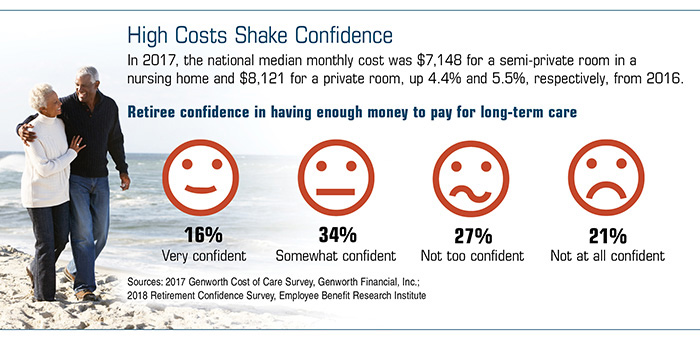Top Guidelines Of Pacific Prime
Table of ContentsLittle Known Questions About Pacific Prime.What Does Pacific Prime Mean?Some Known Facts About Pacific Prime.Facts About Pacific Prime Uncovered
In a lot of states, the insurance provider is needed to send you a copy of the modifications to your plan. It is very important that you read Endorsements or Bikers so you understand how your policy has actually changed and if the policy is still sufficient to meet your demands. To get a copy of your insurance coverage, please call your insurance policy representative or firm.
The Institute of Medication (IOM) Committee on the Consequences of Uninsurance launches a prolonged assessment of evidence that addresses the significance of health insurance coverage with the magazine of this record. Insurance coverage Issues is the very first in a series of 6 reports that will be released over the following two years documenting the fact and consequences of having actually an estimated 40 million individuals in the USA without health and wellness insurance protection.

All About Pacific Prime
The goal of this collection of research studies is to redouble plan interest on a historical issue. Complying with the longest financial expansion in American history, in 1999, an approximated one out of every 6 Americans32 million grownups under the age of 65 and even more than 10 million childrenremains without insurance (Mills, 2000).

Ten percent of the populace accounts for 70 percent of healthcare expenses, a correlation that has actually remained constant over the previous three decades (Berk and Monheit, 2001) - international health insurance. Therefore health insurance coverage proceeds to offer the function of spreading out risk also as it significantly finances routine treatment. From the viewpoint of wellness care suppliers, insurance carried by their clients aids safeguard a revenue stream, and neighborhoods gain from monetarily viable and stable healthcare professionals and establishments
Government offers health and wellness insurance policy to populaces whom the exclusive market might not offer efficiently, such as handicapped and seniors, and populations whose access to healthcare is socially valued, such as kids and pregnant females. The best ends of medical insurance protection for the private and areas, consisting of office areas of workers and employers, are enhanced health outcomes and quality of life.
Not known Facts About Pacific Prime
Employees rate medical insurance initially by far in importance among all the benefits used in the work environment (Salisbury, 2001). There have actually been sizable financial investments of individual and public funds to offer wellness insurance coverage, several people still have no coverage. Regardless of substantial coverage of study searchings for and health and wellness care research study results, the basic public remains i thought about this baffled and mistaken about Americans without medical insurance and the implications of doing not have insurance coverage.

Without doubt, the intricacy of American wellness treatment funding systems and the riches of resources of details include to the public's confusion and skepticism regarding medical insurance stats and their analysis. This record and those that will follow purpose to distill and offer in readily reasonable terms the extensive research that bears on concerns of wellness insurance coverage and its significance.
Fifty-seven percent of Americans surveyed in 1999 thought that those without medical insurance are "able to get the care they require from physicians and hospitals" (Blendon et al., 1999, p. 207). In 1993, when nationwide interest was focused on the issues of the uninsured and on pending health and wellness treatment regulation, simply 43 percent of those surveyed held this idea (Blendon et al., 1999).

They likewise receive fewer preventive services and are much less likely to have routine take care of persistent problems such as high blood pressure and diabetes mellitus. Persistent diseases can result in expensive and disabling problems if they are not well managed (Lurie et al., 1984; Lurie et al., 1986; Ayanian et al., 2000). One national survey asked more than 3,400 grownups regarding 15 highly severe or morbid problems.
About Pacific Prime
Extra proof is presented later on in this chapter in the discussion of insurance and access to healthcare. https://pacificpr1me.start.page. People without medical insurance are young and healthy and balanced and select to do without insurance coverage. Practically fifty percent (43 percent) of those checked in 2000 thought that people without wellness insurance coverage are more probable to have health issue than people with insurance policy
Citizens and policy manufacturers in emphasis group discussions define those without insurance as youths who have the possibility to be covered and feel they do not need it (Concierge Novelli, 2001). Compared to those with at least some exclusive coverage, the without insurance are much less likely to report remaining in outstanding or excellent health and wellness (Firm for Healthcare Research Study and High Quality, 2001).
SOURCE: Center for Expense and Funding Researches, Company for Medical Care Research and Quality, based on MEPS data. Young person between 19 and 34 are even more most likely to lack medical insurance than any type of various other age. This is mainly due to the fact that they are less typically qualified for employment-based insurance due to the nature of their task or their brief period in it.
The assumption that individuals without insurance have better-than-average health complies with from perplexing the reasonably young age account of the uninsured with the much better wellness, typically, of more youthful persons. This obscures the link between wellness status and health and wellness insurance. For those without accessibility to work environment medical insurance, poor health and wellness is a prospective barrier to buying nongroup insurance coverage because such coverage might be very valued, leave out pre-existing problems, or be just unavailable.